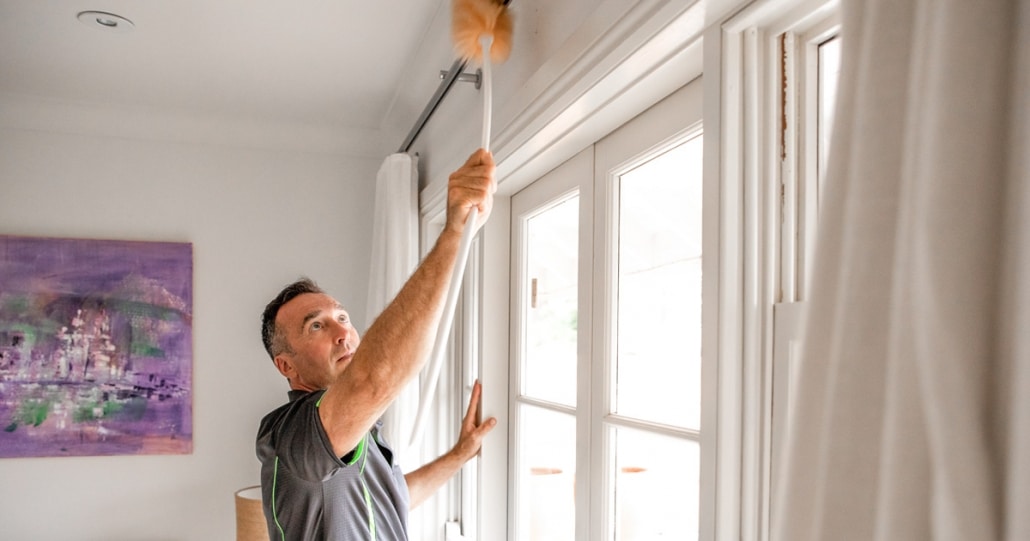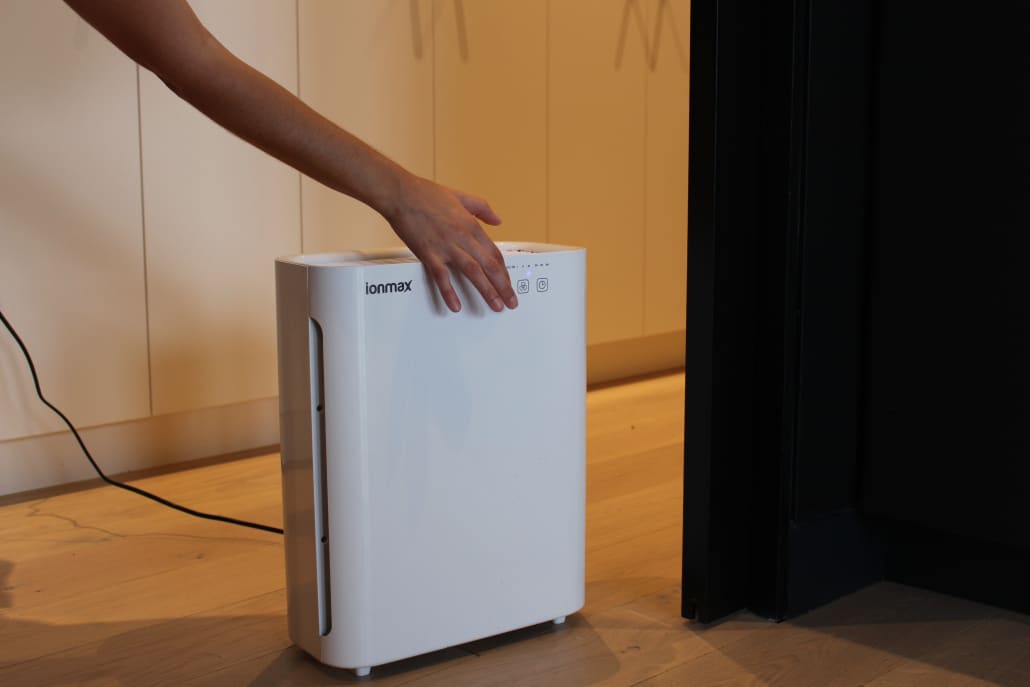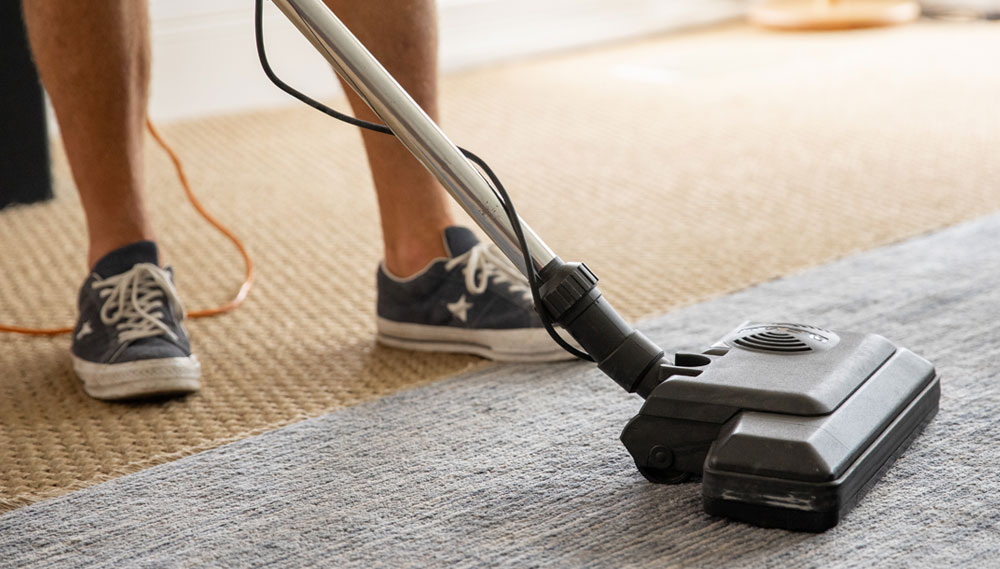How to get rid of dust
By Michael Sweet | 1800 CLEANER
I want to take you with me on a journey into the world of the microscopic. A world within our world that the naked human eye can not see. And this journey is a crucial first step in your adventure to get rid of dust and to live dust-free.
Even though we can’t see it, it is nonetheless a world that impacts our lives dramatically. A world that is simultaneously terrifying and incredibly beautiful all at once. The recent drama of the worldwide panic about a virus so small that we can’t see it is opening our eyes to the dangers of the minuscule world of viruses and pathogens.
These things are so tiny that they have escaped human control throughout history, and the debate rages on whether we will ever control them. Once you get your head around the microscopic nature of such things, you may see that wearing a mask to stop a microscopic virus is like trying to stop a mustard seed with a farmer’s wooden fence.
Let’s talk about dust and how to get rid of it
Viruses are just one of many microscopic things that we humans can be dramatically impacted by. Many of which we have very limited control over in practical reality. This article wishes to discuss an even more common and far less talked about microscopic subject. And it is gratefully something we can do something about to dramatically improve our health. It’s dust and, more specifically, common house dust.
We want to deal with the effect dust can have on the health and well-being of those humans who live with it. This is to say; practically everyone who lives under a roof on the planet.

How big is dust?
Dust particles vary in size. The dust we are talking about here is the dust so small that you can’t see it unless it clumps together on an open surface in your home. Individually you can discern it if it glitters in a sunshine shaft as the light reflects off it. It can range in size from as small as half a micron to 100 microns.
A micron is one millionth of a meter. To give you an idea of the scale, we will start high and finish low.
100 microns Thickness of a standard sheet of paper
70-30 microns Circumference of a human hair
40 microns Naked eye visibility threshold
25 microns Diameter of a white blood cell
10 microns Size of a typical adult dust mite
8 micros Diameter of a red blood cell
2 microns Diameter of Coccus Bacteria
0.5 microns Diameter of Bacillus Bacteria
0.1 microns Diameter of Coronavirus
0.1 – 0.5 nanometres Diameter of a typical atom
(A nanometer is one-billionth of a meter)
If you’re still reading, you get an idea of the breathtaking sizes we’re discussing here. Once you get down to the atomic level, things start to boggle the mind. We can leave that level of infinitesimal smallness for another time and perhaps a follow-up article.
What comprises a typical house dust particle?
The average-sized human being is purported to shed, on average, a full teaspoon of dead skin flakes each and every week. These dead human skin scales are a favourite food of dust mites.
Additional to human skin flakes, dust mites, and their tiny feces, we often find loads of other micro-stuff. Things like; human hairs, insect parts, animal dander, microscopic plastics, and other fibres. Take a breath; pollens from plants, mould spores, micro-dirt, aerosols, and many tiny contaminants, including exhaust fumes. Then there are aerosols and many assorted minuscule things, some benign and some toxic.
Why is house dust so harmful?
Whether you have allergies or not, most human beings will feel the negative effects of being in an indoor environment for an extended period of time that is too dusty.
Most of us are sensitive enough to feel an ickiness in such dank places. For those with allergies and higher sensitivities, the impact is usually much worse, with asthma, eczema, dizziness, dry throat, sore eyes, itching, sneezing, congestion, and an overall feeling of unwellness being typical symptoms. Over time our immune system can become compromised, opening the doorway to other illnesses and diseases.
The poos of the dust mites typically contain undigested enzymes from the human skin scales they delight in consuming. These tiny fragments can enter our lungs and cause mild to substantial irritation. Cutting the breeding cycle of dust mites is critical. By reducing their food supply and overall levels of dust in your home, you can expect to find an immediate improvement in the aforementioned symptoms.
Why is it so hard to get rid of the dust?
This microscopic dust is very hard to get rid of. It’s not only so tiny that it floats but is also subject to static electricity when you try to remove it with traditional cleaning methods. This positive charge that we put on these tiny particles can actually contribute to making the fine particles stay suspended mid-air in an indoor environment for up to five days.
That’s why we often find that thin layer of dust collecting again and again on open surfaces in the days following our cleaning efforts. So how do we get rid of this dust?
Therefore, an imperceptible dust-fog is occurring in most modern homes unbeknownst to its inhabitants. This fog seems to be at its thickest when there is a lot of movement and starts to settle somewhat when the home is still for days and weeks, but it is easy to disturb.
What can your average household do about it?
The best move for the modern household is to understand how dust behaves and to have a plan for it.
The first crucial step is to appreciate that it floats under typical conditions and to negate that by using an ionizer when cleaning with doors and windows closed to minimize through drafts and allow the dust to settle pre-clean. This will assist over time in ensuring that the positive static electricity charge that attaches to the particle is negated by the negative ionic charge, and the dust will fall to the open surfaces and ground much quicker. Stopping the dust from floating is a crucial step towards getting rid of the dust.
Now that the dust is no longer floating as much, we can use our vacuum cleaner to collect it. Ensure your vac is equipped with a HEPA-grade filter, and use microfibre mops and cloths.

HEPA filter used by 1800CLEANER team
Particularly thick sections of dust should be approached with a moist cloth. It’s difficult to get it all the dust in one fell swoop. This is a process.
The law of diminishing dust returns
Ever-decreasing amounts of dust will be removed with each subsequent clean, dramatically reducing the dust fog in the home over time as less and less dust remains. To do this well you should really still the house, reduce through traffic and make a minimum of physical movements as you clean in the initial stages when the dust is at its worst.
Once the bulk of dust is removed, you can vigorously use a feather duster to dislodge all the hidden dust in the nooks and crannies. This will take time and is a process with the law of diminishing returns helping you remove less and less dust each time from a house with increasingly smaller dust levels remaining within it. By repeating this process over time you will get rid of most of the dust in your home.
The last step is to breathe easy and enjoy.
Michael Sweet is the founder of 1800 CLEANER and has over 30 years of cleaning experience.

Michael Sweet, founder of 1800 CLEANER| WWW.1800CLEANER.COM.AU





